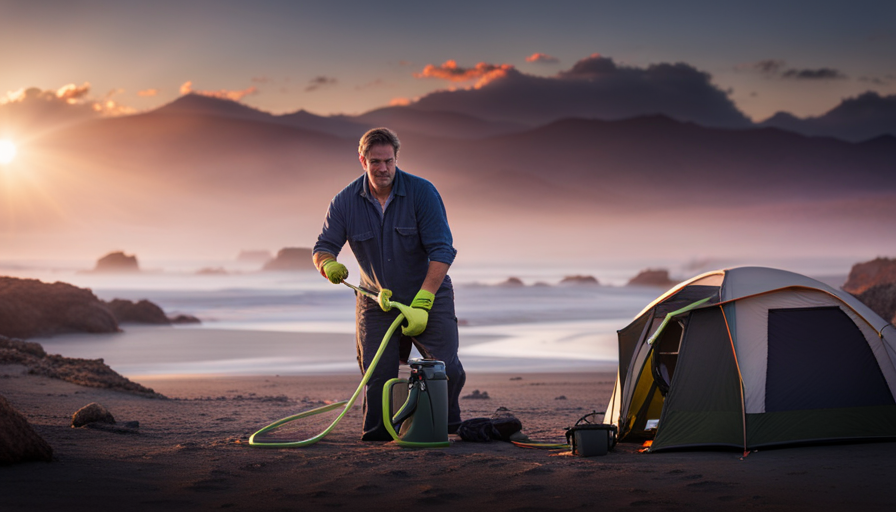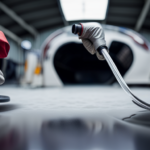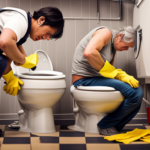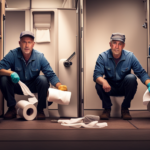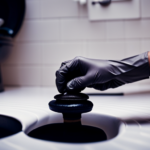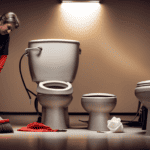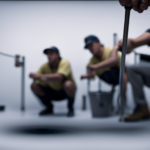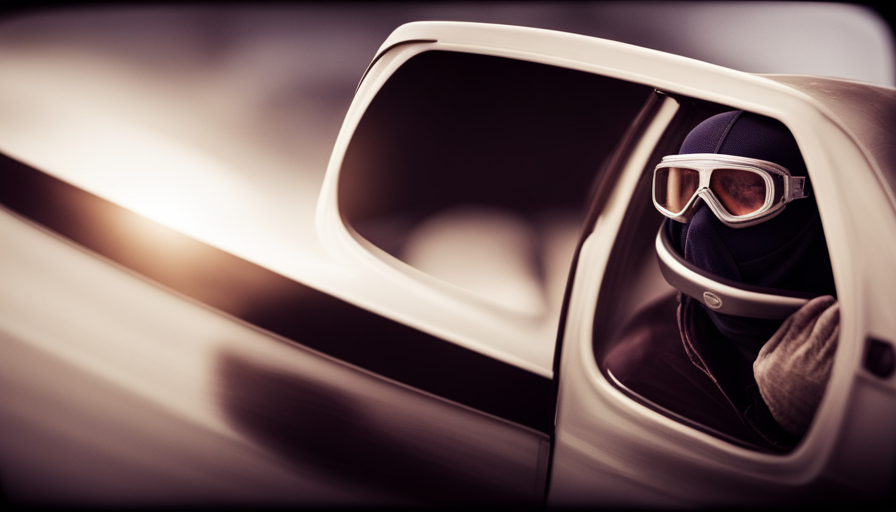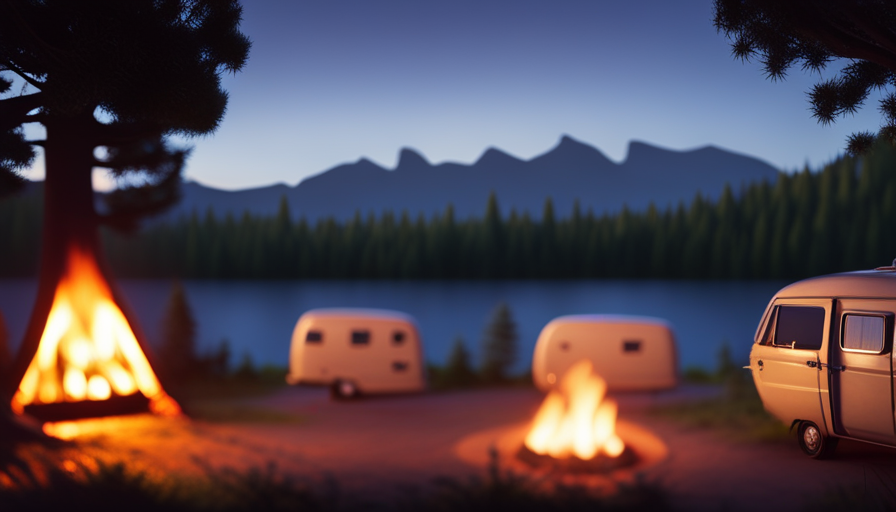Have you ever been in a challenging situation with a clogged camper black tank while on a camping trip? No need to fret! We have all the expert tips and techniques to help you unclog that troublesome tank and get back to enjoying your time outdoors.
In this comprehensive guide, we will walk you through the step-by-step process of identifying the cause of the clog, gathering the necessary tools and supplies, and effectively unclogging your camper black tank. From using a plunger to a plumbing snake or flexible hose, we will explore various methods to tackle the blockage head-on.
But we don’t stop there. We’ll also provide insights on how to flush the system using hot water and dish soap, and offer valuable advice on regular tank maintenance to prevent future clogs. Plus, we’ll discuss the possibility of upgrading your tank or plumbing system for a hassle-free camping experience.
So, let’s dive into this informative guide and say goodbye to clogged camper black tanks once and for all!
Key Takeaways
- Regular maintenance and prevention are key to avoiding clogs in the camper black tank.
- Various methods can be used to unclog the tank, such as using a plunger, plumbing snake, or flexible hose.
- Identifying the cause of the clog is important in order to prevent future issues.
- If clogs persist despite maintenance and DIY methods, it is recommended to seek professional help.
Identify the Cause of the Clog
You need to figure out what’s causing the clog in your camper’s black tank so you can unclog it. Identifying the common causes and recognizing the signs of a clogged black tank is crucial for effective troubleshooting.
One of the most common causes of a clog is the accumulation of solid waste and toilet paper. If you notice that the toilet isn’t flushing properly or if there’s a foul odor coming from the tank, these are signs that there might be a clog.
Another common cause is the buildup of grease and debris from dishwashing. This can restrict the flow of water and lead to a clog.
Additionally, foreign objects such as toys, paper towels, or feminine hygiene products can also cause blockages. It’s important to be aware of these potential causes so that you can address the clog properly.
Now that you’ve identified the cause of the clog, it’s time to gather the necessary tools and supplies to begin the unclogging process.
Gather the Necessary Tools and Supplies
First, make sure you’ve got all the essential tools and supplies ready for the task at hand. Having the right tools and equipment is crucial for successfully unclogging your camper black tank. Here are the necessary items you will need:
-
Plunger: A plunger is a handy tool for creating pressure and dislodging any debris that may be causing the clog.
-
Sewer hose: A high-quality sewer hose is essential for emptying the tank after unclogging it.
-
Rubber gloves: To protect your hands from any potential mess, it’s advisable to wear rubber gloves.
-
Tank cleaner: Using a specialized tank cleaner can help break down any solid waste and prevent future clogs.
-
Flashlight: A flashlight will come in handy to inspect the tank and identify any potential issues.
Before tackling the unclogging process, it’s also important to keep in mind a few troubleshooting tips. Start by checking the vent pipe for any obstructions, as a blocked vent can lead to clogs. Additionally, avoid flushing non-biodegradable materials down the toilet to prevent future clogs.
Once you have gathered all the necessary tools and supplies and are familiar with troubleshooting tips, you’re ready to move on to the next step: emptying the tank.
Empty the Tank
After gathering all the necessary tools and supplies, it’s time to start by emptying the tank. Identifying the causes of the clog is crucial in order to effectively unclog the camper black tank. Common causes include the accumulation of solid waste, toilet paper, and foreign objects that shouldn’t have been flushed. It’s important to be aware of what goes down the toilet to prevent future clogs.
To empty the tank, locate the drain valve on the camper and attach a sewer hose securely to it. Make sure the other end of the hose is connected to a designated sewer dump station or an appropriate waste disposal facility. Open the drain valve carefully to allow the contents of the tank to flow out. It’s important to empty the tank completely to ensure an efficient unclogging process.
By emptying the tank, you’re creating the necessary conditions to use a plunger to unclog the tank. This will be discussed in the subsequent section. So, let’s move on to the next step and use a plunger to unclog the tank.
Use a Plunger to Unclog the Tank
To effectively tackle the blockage in your camper’s waste storage, it’s time to dive into the action and plunge your way to freedom. Using a plunger is a tried and true method for unclogging a black tank. However, if you don’t have a plunger on hand, there are alternative options you can explore.
One alternative is using a toilet auger, also known as a plumbing snake, which can help break up and remove the blockage. Another option is a flexible hose attachment that can be connected to a high-pressure water source to flush out the clog.
When using a plunger, it’s important to create a tight seal around the drain opening. This will ensure maximum suction and pressure to dislodge the blockage. A few strong plunges should be enough to break up the clog. However, if the blockage persists, you may need to repeat the process or try an alternative method.
Common causes of black tank clogs include excessive toilet paper usage, the buildup of solid waste, and the accumulation of grease or foreign objects. Regular maintenance, such as using enzyme-based treatments and practicing proper waste disposal, can help prevent future clogs.
To ensure a thorough unclogging process, it’s important to consider using a plumbing snake or flexible hose to remove the blockage. These methods provide additional power and reach to tackle stubborn clogs. With these tools at your disposal, you’ll be well-equipped to tackle any blockage in your camper’s black tank.
Use a Plumbing Snake or Flexible Hose to Remove the Blockage
When you encounter a stubborn blockage in your RV’s waste storage, there’s a powerful tool at your disposal that can effectively remove it – a plumbing snake or flexible hose. These tools are essential for unclogging your camper’s black tank and can save you from a messy and time-consuming situation.
Using a plumbing snake or flexible hose provides an alternative to using a plunger and can be even more effective in dislodging stubborn blockages. Here are three reasons why they’re great options:
-
Versatility: A plumbing snake or flexible hose can navigate through the twists and turns of your camper’s plumbing system, ensuring it reaches the blockage and effectively removes it.
-
Reach: These tools can extend far into your camper’s black tank, ensuring even deep blockages are reached and cleared.
-
Pressure: By using the force of water or the snake’s movement, these tools can apply enough pressure to dislodge and remove even the most stubborn clogs.
To prevent future clogs, it’s important to practice regular preventative maintenance. This includes properly disposing of waste, using septic-safe toilet paper, and avoiding flushing items that can cause blockages.
Now that you’ve learned about using a plumbing snake or flexible hose, the next step is to try a natural or chemical tank cleaner to ensure the tank is thoroughly cleaned and maintained.
Try a Natural or Chemical Tank Cleaner
Give your RV’s waste storage a refreshing clean by trying out a natural or chemical tank cleaner. This will ensure a fresh and well-maintained system. When it comes to unclogging your camper black tank, you have the option of using either a natural or chemical cleaner. Both types have their own set of pros and cons.
Natural tank cleaners are typically made from environmentally-friendly ingredients such as enzymes and bacteria that help break down waste and eliminate odors. They’re non-toxic and safe to use, making them a popular choice among eco-conscious RV owners. However, natural cleaners may take longer to work and may not be as effective on stubborn clogs.
On the other hand, chemical tank cleaners contain powerful chemicals that quickly dissolve waste and unclog the tank. They’re generally faster acting and more effective at removing tough blockages. However, they can be harsh on the tank’s plumbing and may damage the RV’s septic system if not used properly.
When deciding between natural and chemical cleaners, consider your personal preferences, environmental impact, and the severity of the clog.
Transitioning into the next section, another method to try is using hot water and dish soap to flush the system.
Use Hot Water and Dish Soap to Flush the System
One effective method for maintaining a fresh and well-maintained waste storage system in our RV is by utilizing hot water and dish soap to thoroughly flush and cleanse the entire system. Using hot water and dish soap as an alternative method for unclogging the camper black tank can be highly effective.
When faced with a clogged tank, this method can help break down stubborn waste and clear any blockages. To begin, start by filling the tank with hot water. The hot water helps to soften and break down any solid waste that may be causing the clog. Next, add a generous amount of dish soap to the tank. The soap acts as a lubricant and helps to further break down the waste. Allow the hot water and dish soap mixture to sit in the tank for a few hours, or overnight if possible.
After the solution has had time to work, flush the tank by opening the valve and allowing the mixture to drain out. Repeat this process a few times to ensure that the tank is thoroughly cleaned.
While this method is effective, some RV owners also swear by using vinegar and baking soda to clear blockages. Vinegar and baking soda create a chemical reaction that can help dissolve waste and unclog the tank. However, it’s important to note that this method may not be as effective for more stubborn clogs.
To prevent future clogs, regular tank maintenance is crucial. By practicing good waste management habits, such as using biodegradable toilet paper and regularly emptying and cleaning the tank, you can help prevent clogs from occurring in the first place.
Prevent Future Clogs with Regular Tank Maintenance
Regular tank maintenance is crucial to prevent future clogs and maintain a well-functioning waste storage system in our RV. Here are three reasons why regular maintenance is beneficial and three common causes of clogs that we should be aware of.
-
Regular maintenance benefits:
- Extends the lifespan of the tank: By regularly cleaning and inspecting the tank, we can identify and address any potential issues before they become major problems.
- Improves odor control: Regular maintenance helps to keep the tank clean and free from buildup, reducing unpleasant odors in our camper.
- Ensures proper functionality: By regularly maintaining the tank, we can ensure that all components are working properly, allowing for efficient waste disposal.
-
Common causes of clogs:
- Excessive toilet paper usage: Using too much toilet paper can lead to clogs in the black tank. It’s important to use only RV-friendly toilet paper and to use it sparingly.
- Flushing inappropriate items: Flushing items such as feminine hygiene products, baby wipes, or grease can cause clogs in the tank. These items should be disposed of properly instead.
- Lack of water: Not using enough water when flushing can lead to clogs. Sufficient water is necessary to help break down waste and prevent buildup.
Regular tank maintenance is essential to prevent clogs and keep our waste storage system functioning smoothly. However, if we continue to experience frequent clogs despite regular maintenance, it may be worth considering upgrading our tank or plumbing system to ensure a better camping experience.
Consider Upgrading Your Tank or Plumbing System
To prevent future clogs with your camper black tank, regular maintenance is key. However, if you find yourself constantly dealing with clogs despite your best efforts, it may be worth considering upgrading your tank or plumbing system.
Upgrading options are available that can help you avoid common plumbing issues and keep your black tank flowing smoothly. For example, you could invest in a larger tank capacity, which would allow for more waste to be stored before needing to be emptied. Upgrading to a tank with better flushing mechanisms or improved drain valves can also help prevent clogs.
Another option is to upgrade your plumbing system. This could involve replacing old or damaged pipes with new ones that have a larger diameter or better flow capacity. Upgrading your plumbing system can improve overall water flow and reduce the likelihood of clogs occurring.
By considering these upgrading options, you can address the root causes of your clogging issues and ensure a more efficient and trouble-free camping experience. However, if the clog persists despite your best efforts and upgrades, it may be time to seek professional help.
Seek Professional Help if the Clog Persists
If you’re still dealing with persistent clogs despite all your efforts and upgrades, it’s time to call in professional help for a trouble-free camping experience.
Sometimes, no matter how diligent we are in maintaining and upgrading our camper’s black tank and plumbing system, stubborn clogs can still occur. When this happens, seeking professional assistance becomes the best course of action.
Professional help can provide you with the expertise and tools needed to tackle even the most stubborn clogs. They have the knowledge and experience to diagnose the issue accurately and provide alternative solutions if needed. Instead of wasting time and energy trying various DIY methods, a professional can efficiently resolve the problem, ensuring a smoother camping experience.
In addition to their expertise, professionals can also offer advice on preventive measures to avoid future clogs. They may suggest adjustments to your camper’s plumbing system or recommend specific products that can help maintain a clog-free black tank. By seeking professional help, you can gain valuable insights and ensure that your camper’s black tank remains in optimal condition.
Remember, persistent clogs can be frustrating and time-consuming to deal with on your own. By seeking professional help, you can save yourself the hassle and enjoy a worry-free camping experience. Don’t hesitate to reach out to a professional if you’re facing ongoing clogging issues.
Frequently Asked Questions
Can I use a regular plunger to unclog a camper black tank?
Yes, a regular plunger can be used to unclog a camper black tank. It’s a simple and effective method. However, there are also alternative methods available for unclogging a camper black tank. You can use a plumbing snake or a specialized tank wand. These methods can be helpful if the clog is more stubborn or if you prefer a different approach. Remember to always follow proper safety precautions and consult your owner’s manual for specific instructions.
How often should I clean and maintain my camper black tank?
To maintain a camper black tank, it’s important to follow a regular cleaning schedule. I recommend cleaning the tank after every camping trip or at least once a month if it isn’t in use. Start by emptying the tank completely and then use a specialized cleaner to remove any built-up residue.
Additionally, be sure to regularly inspect the tank for any leaks or damage. By following these tips, you can ensure a clean and well-maintained camper black tank.
Are there any specific types of tank cleaners that are more effective for unclogging a camper black tank?
When it comes to unclogging a camper black tank, there are numerous types of tank cleaners available that claim to be effective. However, let me enlighten you with a little secret: none of them really work. Yes, you heard that right. Despite the promises on their labels, these so-called ‘miracle’ cleaners often fall short.
Instead, the most effective method for unclogging a camper black tank involves a combination of proper maintenance, regular cleaning, and a good old-fashioned plunger.
What are some signs that indicate I may need to upgrade my camper black tank or plumbing system?
Upgrade indicators for a camper black tank or plumbing system include frequent clogs, slow draining, foul odors, and leaks. These common problems suggest that your current setup may not be sufficient for your needs.
Upgrading to a larger tank or improving the plumbing system can help prevent future issues and ensure efficient waste management. Additionally, consider investing in high-quality tank cleaners and following proper maintenance procedures to keep your system running smoothly.
What should I do if I have tried all the methods mentioned in the article and the clog still persists?
If all the methods mentioned in the article fail to unclog the camper black tank, it’s time to consider alternative methods.
Although we strive to handle the issue ourselves, sometimes seeking professional help is necessary. Plumbers or RV service technicians have the expertise and specialized tools to tackle stubborn clogs. Don’t hesitate to reach out to them for assistance.
Remember, a clog can be a major inconvenience, but with the right help, it can be resolved efficiently and effectively.
Conclusion
In conclusion, unclogging a camper black tank can be a frustrating but necessary task. By following the steps outlined in this article, you can effectively address the issue and prevent future clogs.
It’s important to note that regular tank maintenance is key to avoiding these problems, as clogs can lead to costly repairs. Did you know that the average cost to repair a clogged black tank can range from $200 to $500? Taking the time to properly maintain your tank can save you money in the long run.
Remember, if the clog persists, it may be best to seek professional help.

